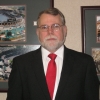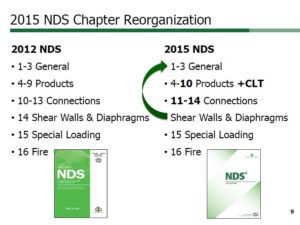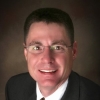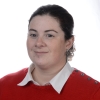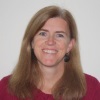23 Jun 2017
Overcoming Mistakes at Work
I think we can all agree, everyone makes mistakes. But how we deal with mistakes can greatly influence our success at work and in life. As Mark Twain once said, “Good judgement is the result of experience and experience the result of bad judgement.” So, how then are we to handle our mistakes in a way that nurtures self-growth, rather than self-doubt?
Here are three steps toward moving past mistakes in the workplace:
- Be honest with yourself and your supervisor. Admit your mistake and take responsibility. Although we all hate to admit we were wrong, making excuses or blaming others impedes our ability to learn from the mistake.
- Make amends. Do your best to help fix the problem; taking the initiative of responsibility will help to show your willingness to completing a successful project.
- Move on. Dwelling on past mistakes will lead to a fear to act on new opportunities.
Though it may be a rough season to walk through, learning from mistakes can lead to growth and better decision making in the future. I once worked with a senior engineer who had missed checking some roof trusses for uplift, and only realized their mistake as the building was being constructed. Rather than cover their tracks, the engineer graciously shared their misdeed with the younger engineers so that we might learn from their mistake, and avoid one of our own. Honesty and humility can go a long way toward repairing any mistake you might have committed, and may gain you some respect from your colleagues.
In April 2017, Patrick Fortney, PhD, PE, SE, P.Eng, from the University of Cinncinati, presented The Chevron Effect – A Paradigm Shift in Approach to Analysis. He nominated Wounded Warrior Project (https://www.woundedwarriorproject.org/) for the SEU Speaker Inspires donation of the month.
Patrick shared why he chose the WWP: “The mission of the Wounded Warrior Project is to honor and empower wounded warriors who incurred a physical or mental injury, illnesses, or wound, co-incident to military service on or after September 11, 2001. As with most veterans, these veterans served our country not out of any political bent or personal goal; they made selfless commitments to protect and preserve the great freedoms that we as Americans enjoy and vowed to resist anyone acting to take our freedoms from us.
The Wounded Warrior Project not only addresses the physical ailments of these veterans but, takes a holistic approach to helping veterans to once again acclimatize to their private and personal lives; addressing issues not only suffered by the veterans but, by their families as well. I encourage everyone to view the testimonials of the wounded veterans and their families to which this charity has served. We cannot overlook or underestimate the sacrifices made by our veterans.”
Thank you, Patrick, for helping structural engineers with your SE University session, and for your designation of Wounded Warrior Project as our SEU Speaker Inspires Organization of the Month!
SE University began the SEU Speaker Inspires program in 2015 as a way to “pay it forward”, enabling our speakers to designate a charity/organization of their choice for SE University to make a donation to help improve our world.
Have you seen some of the new mid to high-rise structures that are using cross-laminated timber? While the product has been used in Europe since the 1990s, it has more recently become available in the US and Canada. Now, with the incorporation of this new wood product in the 2015 NDS for Wood Construction, you can expect its availability to increase as more designers become aware of its structural properties.
In the April 2017 SE University Core Session, Lori Koch, PE from the American Wood Council addressed changes in the 2015 NDS for Wood Construction. While some are minor revisions, the most significant change to the 2015 NDS is the incorporation of Cross-laminated Timber (CLT). Lori acknowledged this new wood product has been used internationally for some time, and the NDS felt it was important to include a new chapter for CLT in the wood products section of the code. Chapter 14, which referenced design of shear walls and diaphragms from the 2012 NDS, was relocated and included in Chapter 1, so with the addition of Chapter 10 for CLT, the 2015 NDS still remains at 16 chapters.
Also, new to the NDS is terminology for Laminated Strand Lumber (LSL) and Oriented Strand Lumber (OSL). Chapter 8 on Structural Composite Lumber reflects the inclusion of these products in ASTM D5456. Chapter 16, Fire Design of Wood Members, was revised to include CLT.
Additionally, there were updates to design values for southern pine within the NDS Supplement. For a complete listing of changes to the 2015 NDS including references to CLT, read this article from STRUCTURE Magazine or visit www.awc.org for complete information about the 2015 NDS.
In March 2017, Pat Conway, AIA, from the International Masonry Institute, presented Masonry Movement Joints from a Structural and Architectural Perspective. He nominated Friends of Blue Mound State Park (http://fwspbluemound.blogspot.com/) for the SEU Speaker Inspires donation of the month.
Friends of Blue Mound State Park is a group of volunteers working together to benefit the park by enhancing and preserving its natural resources while offering activities and projects to improve the park guest’s visit. Pat shared that he chose Friends of Blue Mound State Park because they “help support our K-5th grade Youth Cross-Country Ski Program to introduce children and families to a winter sport as a part of a fun, active, outdoor Nordic lifestyle. This ski program is run by the Blue Mound Nordic Ski Club and offers ski lessons and games on Saturday mornings in January and February. We rent ski equipment to families and offer scholarships to those who cannot afford it.”
Thank you, Pat, for helping structural engineers with your SE University session, and for your designation of Friends of Blue Mound State Park as our SEU Speaker Inspires Organization of the Month!
SE University began the SEU Speaker Inspires program in 2015 as a way to “pay it forward”, enabling our speakers to designate a charity/organization of their choice for SE University to make a donation to help improve our world.
24 Apr 2017
Safety on the Jobsite
What can you do to be a part of the solution to jobsite safety next time you are out for inspections or construction meetings? Here are several tips to keep safe and be a part of the team creating a safe workplace on the construction site:
- Communicate. Let those in charge be aware of your presence and ask about any potential hazards that may be present during your visit.
- Be prepared. Bring and wear appropriate safety equipment to prevent injury due to accidents.
- Watch for instability. Be vigilant to notice unstable materials and maintain a safe distance from walls or panels that are braced but not yet connected to the structure. Mind all marked boundaries.
- Climb with care. Be sure to ask for assistance in using ladders, scaffolding, or lifts when visiting a jobsite.
Construction sites are constantly changing, and safety is everyone’s responsibility! Read more in Working Well with Others, from the December 2014 edition of Modern Steel Construction, to learn about being a part of the solution.
In April 2017, Lori Koch, PE, from the American Wood Council, presented 2015 National Design Specification for Wood Construction – Significant Changes including Cross-laminated Timber. She nominated the Humane Society of Loudoun County (http://www.humaneloudoun.org/) for the SEU Speaker Inspires donation of the month.
Lori shared why she chose the Humane Society: “I have always loved animals, and have gained several 4 legged family members from local shelters over my life. Adopting an animal from a shelter is one of the greatest gifts you can ever give yourself, although in my experience cats will never be satisfied with your work even if you provide them engineering drawings in advance for their cat tree construction project.”
Thank you, Lori, for helping structural engineers with your SE University session, and for your designation of the Humane Society of Loudoun County as our SEU Speaker Inspires Organization of the Month!
SE University began the SEU Speaker Inspires program in 2015 as a way to “pay it forward”, enabling our speakers to designate a charity/organization of their choice for SE University to make a donation to help improve our world.
28 Mar 2017
Spring Clean your Inbox
April is just around the corner, and that might be the best time to set aside some time to clean out your digital inboxes. Not only do most of us have hundreds of work emails that need to be sorted or responded to, but add in personal email accounts and the task seems overwhelming. Here are some quick tips for gaining control of your overflowing inbox:
- Pick a date. Check the calendar and set aside some time to tackle the issue.
- Avoid interruptions. Make this task your priority for the allotted time on your schedule.
- Look forward, not behind. Commit to maintain organization of your inbox from this point forward. Place all old emails in a folder, and label appropriately (ie. Old email, 2016 emails, etc). Giving yourself a fresh start will help in your commitment to reducing email clutter.
- Set up digital folders. Set up folders with common job numbers, clients, co-workers, personal, and miscellaneous to properly sort emails as soon as they are received. Do it immediately, and you will reap the benefits of a clean inbox!
In October 2016, Susan Burmeister, PE, from S2B Consulting Engineers, PLLC, presented Advanced Topics in Composite Steel Beam Design. She nominated Bridges to Prosperity (http://www.bridgestoprosperity.org/) for the SEU Speaker Inspires donation of the month.
According to their website, “Bridges to Prosperity envisions a world where poverty caused by rural isolation no longer exists. Our programs provide access to healthcare, education and markets by teaching communities how to build footbridges over impassable rivers, in partnership with organizations and professionals. We prove the value of our work through a commitment to the community and its bridge that lasts long after the opening celebration.”
Thank you, Susan, for helping structural engineers with your SE University session, and for your designation of Bridges to Prosperity as our SEU Speaker Inspires Organization of the Month!
SE University began the SEU Speaker Inspires program in 2015 as a way to “pay it forward”, enabling our speakers to designate a charity/organization of their choice for SE University to make a donation to help improve our world.
28 Feb 2017
Have a Knack for Networking
The term ‘networking’ can elicit varying reactions among engineers. You may think of networking opportunities being available through local chapters of structural or civil engineering societies, technical conferences, or building construction associations. Some engineers react with excitement at the thought of networking at these events, while others may cringe at the thought. Some may even consider networking a complete waste of time. However, what if we challenge ourselves to think about networking in a different light?
In an article in Forbes Magazine, Andrew Vest outlines How to Network the Right Way, and includes several tips to be successful at your next networking opportunity. His advice on the subject suggests the key is to consider networking as an opportunity to help others rather than for self-gain.
Often times, engineers will only branch out to network when they are in need of something, such as developing new clients for the firm they work for, looking for a new job, or growing their own business. What if instead, you challenged yourself to get more involved and offer your talents and knowledge to help benefit the group?
One key idea presented in the article is that the right way to approach networking is to start before you need anything. Begin by changing your motives, and aim to enjoy people that share your same passions. Mr. Vest comments that the most successful networkers learn to listen and figure out who they can connect with others to be a benefit to the group, without striving for personal gain. Entering a networking opportunity with the goal of learning more about others and their businesses so that you might be able to help them can also lead to better relationships and growth within your own business.
If networking has never been ‘your thing’, perhaps approaching it in a different attitude may help ease your discomfort. The strategies outlined by Mr. Vest can certainly be employed at your next meeting or event, and you might find you enjoy networking more when your focus turns to others first.
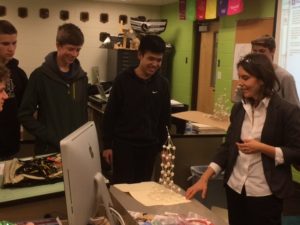 SE Solutions recently helped organize a week long course called “Explore Engineering” at a Michigan High School. The course gave students an opportunity to get an insight into various disciplines of engineering, including Civil and Structural Engineering. Several structural engineers gave presentations to the students with an opportunity for “hands on” demonstrations also, including:
SE Solutions recently helped organize a week long course called “Explore Engineering” at a Michigan High School. The course gave students an opportunity to get an insight into various disciplines of engineering, including Civil and Structural Engineering. Several structural engineers gave presentations to the students with an opportunity for “hands on” demonstrations also, including:
AnnMarie Garko-Hill, PE: Senior Technical Manager of Structural Engineering Software at Bentley Systems. (www.Bentley.com) AnnMarie gave a presentation on Structural Engineering and then had students build the tallest building they could out of marshmallows and toothpicks.
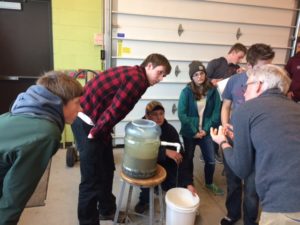
Bob Johnson, PE, President, Structural Solutions Studio, Jenison, MI. Bob provided further insights into Structural Engineering for the students. He also was able to include information on the 20 trips he’s made to Rwanda for “20 Liters” to help bring clean drinking water to Rwanda. Bob was able to bring equipment for the students to build their own bio-sand filters.
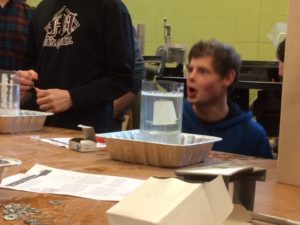 Sue Khalifah, SE, PE; Student Experience Director, Lyles School of Civil Engineering, Purdue University. Sue gave an overview of Civil Engineering and then had a hands on buoyancy experiment for the students.
Sue Khalifah, SE, PE; Student Experience Director, Lyles School of Civil Engineering, Purdue University. Sue gave an overview of Civil Engineering and then had a hands on buoyancy experiment for the students.
Thank you to AnnMarie, Bob, and Sue for investing their time in helping high school students learn about engineering!

